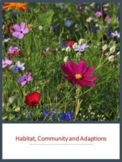Biology Ecosystem in a Jar Cell Theory Microbiology 2 Labs Middle & High School
- Word Document File
Also included in
- STEM Environment science Teach your students about the wildlife which not only exists but is now able to thrive outside in nature. These labs are engaging activities designed to assist your science students to connect between cause and effect on different species of life. The lessons are an idealPrice $24.74Original Price $35.34Save $10.60
Description
Hay Infusion
A hay infusion is easily prepared from inexpensive materials—simply soak fresh or dried plant material in water
Objective
Have students set up a hay infusion to observe small organisms
Hay infusions are widely used as a source of microorganisms for studying decomposition, fermentation, and disease. As a hay infusion undergoes ecological succession, students will be able to observe different species and the fluctuation in their population.
This was a great resource to introduce your cells unit.
Bring history to your students to life by performing Leeuwenhoek’s famous lab!
Do not just teach cell theory but live it!
MATERIALS
Four jars with lids
A small amount of chopped hay (dried grass will also work, just not as well)
White rice
Egg Yolk
¼ cup of rich soil
Long-handled ladle (you can attach a broom to the ladle to make it longer)
A pond or small body of water
Science notebook
Large jar with a lid
Stick slightly shorter than the jar.
Small spade
Plastic Bottle
Magnifying Glass
Pond






